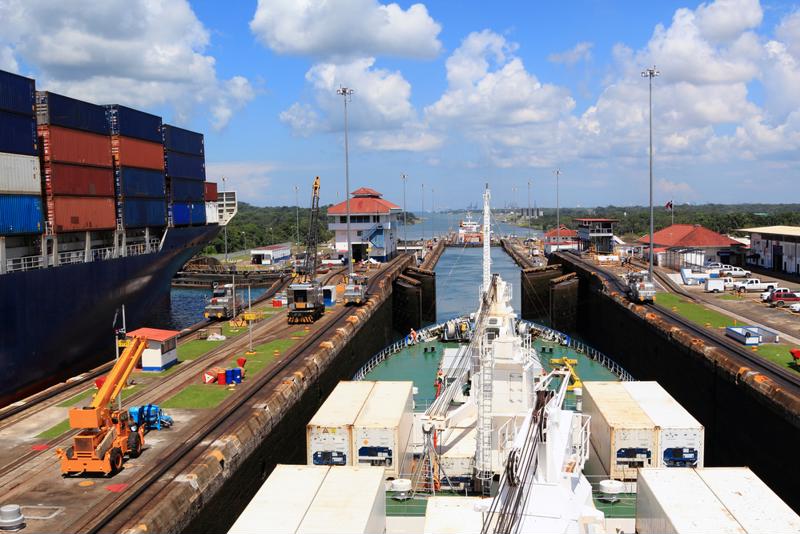Automation is coming to West Coast ports, but it will not be cheap.
Facilities in California are going electric to meet certain California environmental standards. However, the Pacific Merchant Shipping Association (PMSA) commissioned a report that found that the implementation of such changes will be costly, according to the Journal of Commerce (JOC). Port-planning firm Moffatt & Nichol is carrying out the study, which came about after requests from the California Air Resources Board (CARB) and Gov. Jerry Brown regarding California's Sustainable Freight Action Plan.
Automation is coming along the Pacific coast
Numerous ports along the Pacific Ocean are gearing up for an automated future. For example, Middle Harbor on the San Pedro Bay last year announced plans for driverless trucks and remote-control cranes. Magnets within the asphalt will guide trucks through the facilities as they carry cargo to robotic hoists. It is these sort of changes that will be expensive to implement, but will also improve efficiency at ports that have struggled with congestion recently as they are held to strict pollution regulations.
"I don't see that we can move increased volumes of containers with the current model," Chris Parvin, executive vice president of marine operations for Mediterranean Shipping Co. SA, told Bloomberg. "The only way we can do that is with increased efficiency, which is dependent on automation and technology."
 The recently widened Panama Canal may permanently alter preferred shipping routes.
The recently widened Panama Canal may permanently alter preferred shipping routes. Parvin's company leases berthing space at the Port of Long Beach, which along with the facilities in Los Angeles, is working to remain tops in the U.S. in terms of cargo at a time when the newly renovated Panama Canal is set to disrupt previous shipping routes.
The current model Parvin spoke of recently was ravaged by setbacks throughout and immediately following a lengthy contract dispute between the Pacific Managers Association (PMA) and the International Longshore and Warehouse Union (ILWU). Work slowdowns, among other things, led to significant congestion issues during the contentious negotiations – something West Coast ports are still recovering from – though an agreement was reached in early 2015. As a result, many shippers diverted their cargo to the East Coast, and with the widened Panama Canal set to accommodate larger ships, they have incentive to remain there. California ports' attempts to automate will not just help them adhere to state environmental policies, they could also appeal to shipping companies that previously moved east.
"Automation doesn't come cheap."
The switch to automated equipment will cost billions of dollars
Automation does not come cheap, though. To win back lost business and retain what they still have, West Coast ports will have to pay billions of dollars. Moffatt & Nichol are studying the "commercial realities and technological feasibility" of automating 13 of the ports of Los Angeles and Long Beach's terminals, the JOC explained. So far two, including Middle Harbor, have chosen to automate their operations, meaning they have decided to go electronic. The governor's office noted that the state's goal is to cut pollution while maintaining productive port and freight operations, which are essential to California's economy.
One reason why automating would be so expensive, Moffatt & Nichol found, is that equipment at marine terminals has to be replaced on a consistent basis, according to the JOC. Expensive automated guided vehicles and stacking cranes regularly is a costly prospect. The port planning firm pegged the cost of replacing terminal equipment and other infrastructure at the ports of Los Angeles, Long Beach and Oakland at $7 billion over the next 30 years.
The cost would be much higher if the three ports chose zero or near-zero emission replacements for retired equipment. Moffatt & Nichol found that through 30 years, the three ports would have to spend $23 billion to purchase this sort of equipment. Meanwhile, high-density stacking equipment would run around $35 billion throughout the same period.
While two terminals in Los Angeles and Long Beach have chosen automation, none of those at Oakland have. The latter does not handle nearly as much cargo as the former two, which means at this point automation might not be worth the cost. Ports need reasons to justify the switch to zero or near-zero emission equipment, and with most freight unloaded at the two larger ports to the south, terminals in Oakland can not point to two large cargo loads as an argument in favor of the switch.